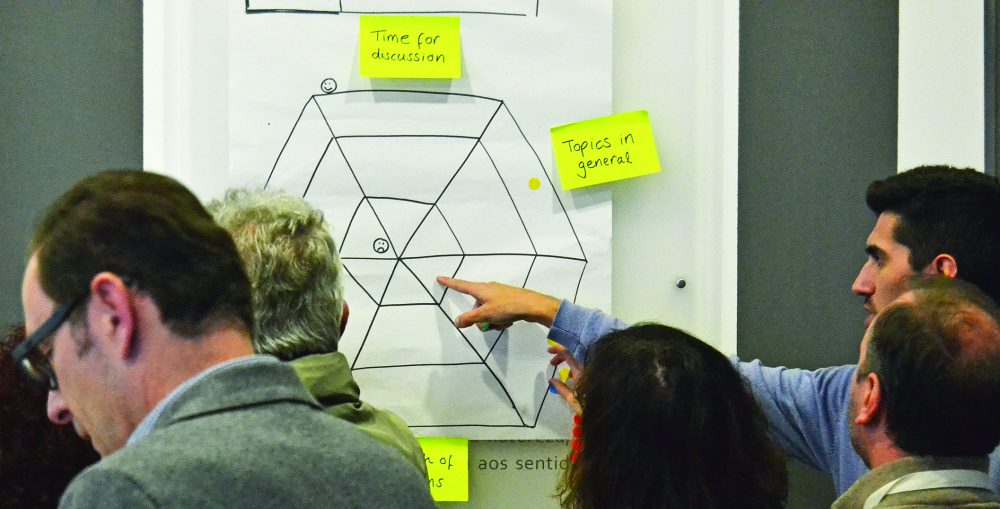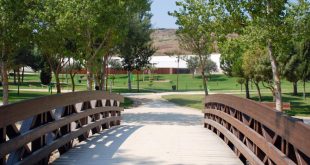While climate change is a common challenge, the local realities all differ from one another. ECO123 talks to Marcelo Afonso, a municipal councillor and adviser to the mayor in Ansião, who is passionate about the walking trails in the enormous oak forest in his municipality.
To what extent is climate change a concern in Ansião?
Unfortunately, our population is rather dispersed and ageing, which makes our need to adapt to climate change a challenge. We have to change people who are highly resistant to changing certain habits that they have maintained over many years. They often don’t understand (or don’t believe in) the notion of what climate change means and the message that we are trying to put across. Many people aren’t willing to change.
What kind of habits?
For example, our homes are in a rural setting and they aren’t heated, with no protection against draughts. They need minor changes that would improve energy efficiency. People often choose to use heaters based on less efficient, older systems. They also can’t afford to invest in new forms of energy. For example, we have a repayment scheme of 11 to 15 years for the purchase of solar panels. A 70-year-old is hardly likely to invest in a solar panel.
The fires in 2017 meant the emission of 8 million tons of CO2. What lessons did this year bring to Ansião?
Our experience is that eucalyptus monoculture is really harmful, it’s dangerous. In itself, it constitutes a huge risk of forest fires. These are trees that function almost as an active fuel in propagating a fire. In Pedrógão and spreading to Figueiró, on the border with Ansião, what the monoculture did was clearly visible in what used to be the pine forest inland to the north, and which now has almost no pine trees left. The fire reached Ansião, and we have a vast fire break, because we have the A13, which served as a buffer against the fire. But, above all, we have a great forest diversity and trees that are fire-resistant. In this case, it’s the largest area of Portuguese oak in the country. We also have holm-oak, which is a great tree because it doesn’t burn and can withstand fire.
We’re risking a lot and have programmes designed to support people in planting arbutus, Portuguese oak and stone pine, precisely because these are trees that are more fire-resistant and are part of our native forest. It’s always good to keep what is ours and not import species that come from outside the region.

Are there any inspiring examples of climate change mitigation that can become part of Ansião’s reality?
We ‘re currently implementing a LED system. Unlike most systems that have just switched their lighting to LED bulbs, we’ve decided to go a little further and play with the fact that the LEDs allow for variations in voltage and luminance. As the municipality’s population is very dispersed and there are areas that don’t require so much lighting, we want to set up a monitoring system, through our IOT systems, the “Internet of Things”, that allows us to keep the minimum levels of luminance required. Our industrial zone, for example, doesn’t need as much lighting from 3am to 6am. Reducing the luminance by 40%, for example, allows us to save 40% on the bill for that area. And this will all be controlled through a power plant that we’re going to set up.
What changes would you like to see happening in Ansião?
Setting up a system that would allow people to travel from home to work by electric car. Because no one is going to do more than 40km a day at most. Electric mobility for regions like Ansião is perfect. In the long run, I would like to see people joining the green mobility movement and gradually starting to replace their fleet of cars. We would reduce our carbon footprint. With our forested area, we already have a huge carbon sink. Then we would have an enormous surplus, which would allow us to be at the forefront of what climate change mitigation is all about.
Could there be an intervention in terms of public transport?
This is a tricky question. In Ansião we don’t have any public transport. Most of the interior doesn’t have any public transport! Only school transport that we provide for children, and most of this is already concessionary. We would like our bus to be electric. But, at the same time, it’s almost unjustifiable because it’s used so little. It would make more sense, for example, in terms of rubbish collection, which we still do ourselves, and there are fixed routes.
Would it be desirable to have public transport other than school transport, in a place like Ansião? How would it be feasible?
Desirable, yes. To increase what is on offer and reduce the number of cars in circulation, even more so on the IC8. But we lack the population. We already have such a reduced budget, we wouldn’t have enough to invest in a bus for the use of the population. Desertification is a reality; it’s very difficult to get around because there are no jobs.
It’s in areas like Ansião that the decentralised production of energy seems more necessary…
A biomass plant needs a huge amount of water because of the cooling systems. We don’t have enough water. This makes what would be our greatest potential unfeasible. It’s like having a lot of fuel and not having a filling station that can supply it. What’s our solution? Solar panels and wind energy.
Thank you.
.
 Eco123 Revista da Economia e Ecologia
Eco123 Revista da Economia e Ecologia

